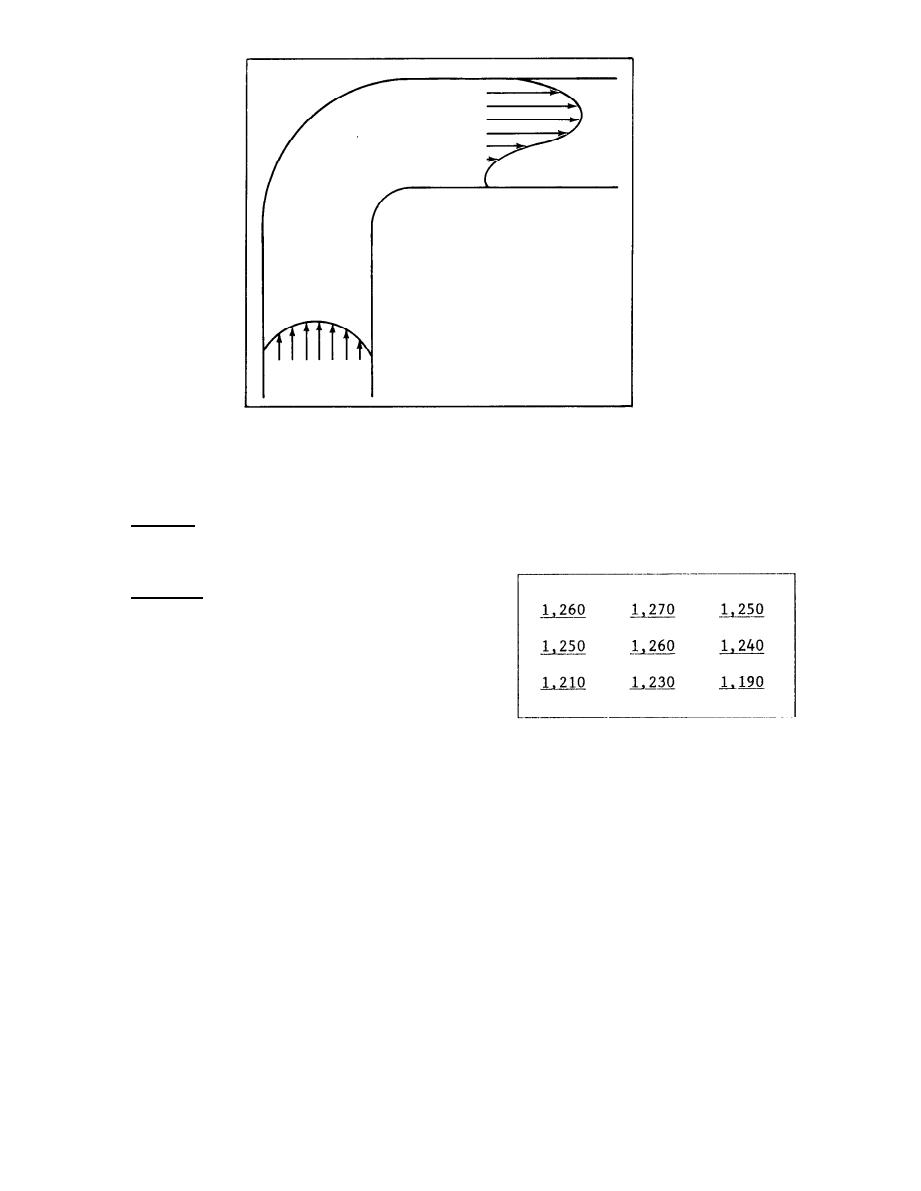

Custom Search
|
|

|
||
 FIGURE 2-20
Uneven Velocity Distribution Downstream
From a Turn in a Duct
Example: A velocity traverse is taken across the face of a 16 by
32-inch return air register as shown in Figure 2-21. How much air is
passing through this return register?
Solution:
=
AxV
Q
The average velocity is calculated by
averaging all the individual readings.
Average velocity = (11,160/9) = 1,240 fpm
and then:
FIGURE 2-21
2
2
Sample Velocity Traverse
Q = (16 in x 32 in)/144 in /ft x 1,240 fpm
(fpm)
= 4,409 cfm
2.12 ROTATING VANE ANEMOMETER. An anemometer is any device used to measure
the velocity of air. A rotating vane anemometer is shown in Figure 2-22.
When placed in a moving airstream, the air causes the propeller to rotate,
just as a child's pinwheel spins in the wind. The rotating vane is geared
to the dial which indicates how many feet of air have passed through the
vane. If the rotating vane is placed in an airstream for 1 minute, then the
"feet" reading will actually be feet per minute. Or, a reading may be taken
for one half of a minute and then doubled to arrive at velocity in feet per
minute.
The rotating vane anemometer cannot be used to measure velocity inside a
duct. It is used to measure velocities in exposed areas such as grilles and
registers, openings such as doorways, or across coils where there is
2-20
|
 
|
|
 |
||